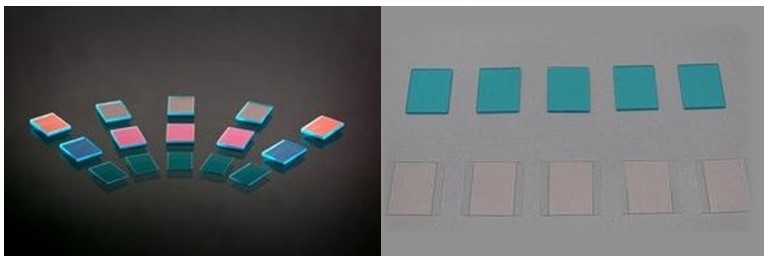Application of OLPF Optical Technology
Optical low-pass filter, OLPF are mostly laminated by two or more pieces of quartz, and placed in front of the CCD sensor. The light beam of the target image information undergoes birefringence (divided into an ordinary o light beam and an abnormal e light beam) after passing through the OLPF.
It's to calculate the sampling cut-off frequency according to the size of the CCD pixel size and total light-sensing area. It can also calculate the separation distance from o light and e light. Changing the incident light beam will produce the target frequency of the difference frequency, so as to weaken or eliminate the low frequency interference fringes (Moiré false color fringes), especially for the pseudo-color interference fringes appearing in the color CCD.
Optical low-pass filter function
Filter function: 1. Infrared filter. 2. Trimming the incoming light Optical low-pass filter to filter out infrared (IR CUT) Color CCD / CMOS can also sense the infrared. Because it senses the infrared, it will lead the DSP cannot be calculate correct color. Therefore, it’s needed to add a filter to separate the infrared part of the light. Only color CCD needs to install filters and black and white do not need. The optical low-pass filter trimmed into the light because the CCD is one of the Photoreceptor (CELL). The preferably light is coming in directly. In order to avoid any interference to adjacent photoreceptor, it’s necessary to trim the light and that piece of filter should not be glass but quartz. The use of physical polarization properties of quartz is to keep the direct part of coming light and reflect off the oblique part, to avoid affecting the next to the sensitive point.

We make good quality and stability by the fully automated equipment manufacturing. With our R & D team commit to professional research and innovation, the use of new process technology and special processing materials at 420-630nm in the visible range of light transmittance (AR) reach to more than 90%, maximize the performance of OLPF to meet customer requirements.



